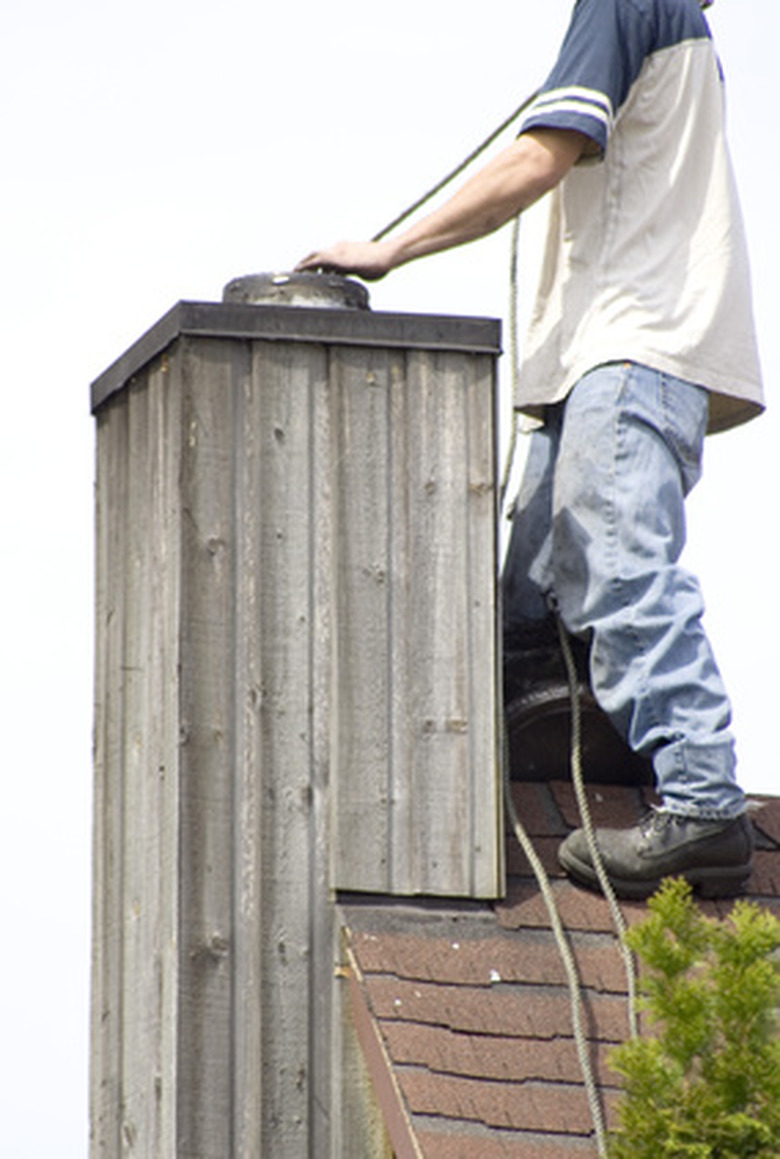Double Wall Vs. Triple Wall Chimney Pipe
Chimney pipe is insulated metal pipe used to vent safely to the outside air the products of combustion produced by wood, coal or oil. It is not necessarily installed in a chimney; it can be freestanding. Stove pipe is uninsulated pipe used in the room where the stove or other appliance is located. Stove pipe is made in single- and double-wall versions. Chimney pipe also is made in two types, double wall and triple wall.
Listing
Listing
Double- and triple-wall insulated pipe is listed as Class A vent pipe and must meet either UL standard 103 or 103HT. UL standard 103 requires pipe capable of safety operating with an internal temperature of 1,000 degrees Fahrenheit and withstanding a maximum temperature of 1,700 degrees Fahrenheit. The comparable numbers for the 103HT standard are 1,700 and 2,100 degrees.
Choice of Listing
Choice of Listing
The listing required for a particular stove may be specified by the manufacturer. Or your local building code may require a particular listing, either in general or for specific types of fuel or appliance. This can be a reason for using triple-wall pipe rather than double wall. You will need to install chimney pipe meeting the most restrictive listing.
How Used
How Used
Single-wall stove pipe can be installed from a stove to within 18 inches of any combustible material. Neither it nor double-wall uninsulated pipe can be used to penetrate ceilings, walls or roofs. In a vertical chimney pipe installation, uninsulated pipe runs to a ceiling box designed for a flat or cathedral ceiling. The insulated pipe goes through the box, through an attic or second floor if applicable, and up to a rain cap. In a horizontal installation, a wall box is used and the insulated vent pipe goes through the wall and up the exterior of the building to a rain cap. Note: Manufacturers' warranties are voided if the installation is not done by a licensed building contractor or chimney professional.
Function
Function
The function of the insulated chimney pipe is to protect adjacent building structures from the high temperatures created by high-output appliances. To do this requires that the pipe remain cool on the outside by having an internal design that creates a fire-safe venting system. Manufacturers use different techniques to achieve this. Chimney pipe may have insulation packed in the gap(s) between the pipes, or it has a ceramic insulating blanket in conjunction with the gap(s). The goal is to minimize the outside diameter of the pipe and the allowable distance from combustibles. This can be 2 inches for double-wall pipe and 1 ½ inches for triple-wall pipe.
Materials and Cost
Materials and Cost
The outer wall of chimney pipe is stainless steel or galvanized steel. The inner wall is stainless steel. In three-wall pipe the intermediate wall is aluminized steel. The price for a 6-inch inside diameter, 24-inch long section of Class A stainless steel exterior chimney pipe is about $97, as of 2010. The price for the equivalent triple-wall pipe is about $105.
